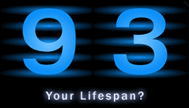Media Literacy in an Interactive Age
Literacy -- defined as the ability to read and write -- is a traditional and fundamental part of school curricula to prepare students to make sense of their worlds. Media literacy builds on that definition of literacy and its place in the curriculum by recognizing the ways in which media shape students' understanding of their environment.
Individuals can also learn to make independent judgments about the information they receive and communicate on the Internet. Before a user logs on, it is important that she or he recognizes the function of the interactive media activity. Initiating communication may serve a variety of functions, including commerce, information, expression, persuasion, entertainment, establishing or maintaining community, exploration, or “surfing.” If an individual decides to surf for the next 2 hours -- fine. However, going online without a defined function -- and time frame -- can lead to a situation in which the user is up all night and suffers the consequences the next day. Consequently, defining function can prevent individuals from turning to interactive media out of boredom or habit and can help them use their time more productively.

